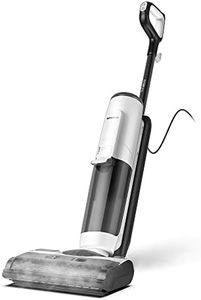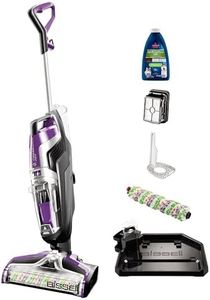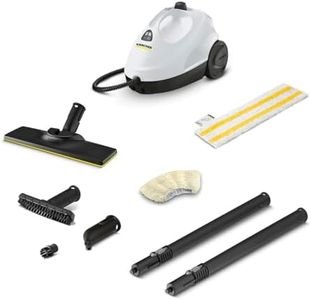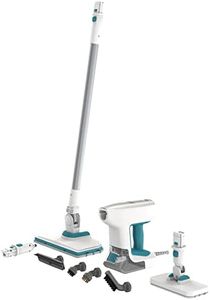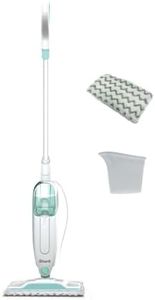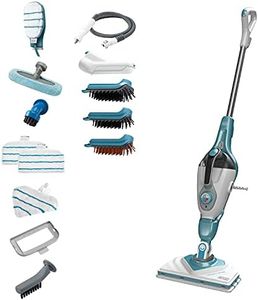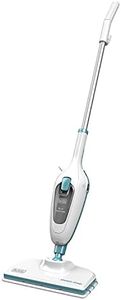We Use CookiesWe use cookies to enhance the security, performance,
functionality and for analytical and promotional activities. By continuing to browse this site you
are agreeing to our privacy policy
10 Best Floor Steam Mops
From leading brands and best sellers available on the web.Buying Guide for the Best Floor Steam Mops
When shopping for a floor steam mop, it’s important to focus on how well the product will keep your floors clean while being easy to use and maintain. Steam mops are a great way to sanitize and clean floors using only water, which means you can avoid harsh chemicals. To find the best fit, think about your home’s flooring, the size of the spaces you’ll be cleaning, and how often you’ll be using the mop. The right steam mop should save you time, be comfortable to move around, and suit your cleaning habits.Water Tank CapacityThe water tank capacity refers to how much water the steam mop can hold at one time. This is important because a larger tank allows you to clean for longer periods without stopping to refill. Smaller tanks make the unit lighter and easier to handle, but you may need to refill them more often. If you have a small living space or plan to do quick clean-ups, a compact tank might be fine. On the other hand, a larger home or bigger cleaning jobs could benefit from a bigger tank to avoid interruptions.
Heat-Up TimeHeat-up time is the duration it takes for the steam mop to be ready to use after filling it with water. Shorter heat-up times mean you spend less time waiting to start cleaning, which is useful for quick jobs or busy schedules. Most steam mops range from 20 seconds to a few minutes. If you value convenience or often do spot cleaning, a fast heat-up time can be very handy. For planned, less frequent deep cleans, this might be less critical.
Steam Control SettingsSteam control settings let you adjust how much steam the mop releases. This is important because different floors may need different levels of moisture. Delicate floors, like hardwood or laminate, benefit from lower steam settings, while tile or stone can handle higher moisture. Some models offer only a single steam output, while others offer variable settings. If your home has various floor types, having adjustable steam gives you the flexibility to clean safely and efficiently.
Cord LengthCord length dictates how far you can move from the power socket while cleaning. Longer cords let you cover more ground without needing to unplug and replug the mop, which saves time and hassle. Short cords might be fine for smaller areas or if you have many outlets, but a longer cord is more suitable for larger rooms or open spaces. Consider the room sizes and outlet locations in your home to gauge your ideal cord length.
Weight and ManeuverabilityThe weight of the steam mop and how easily it can be moved is key for comfort. Lighter models are easier to carry and push, making them suitable for people who may not want to lift heavy appliances or have multiple floors to clean. Heavier steam mops can offer more stability and cleaning power but may be tiring to use for long periods. Consider your strength and the typical cleaning duration when choosing how much weight you can comfortably handle.
Floor-Type CompatibilityNot all steam mops are safe for every type of flooring; some are best suited for sealed hard floors like tile, stone, or sealed wood. Using steam on unsealed floors or certain types of wood may cause damage. Always check if the unit is compatible with the types of floors you have. If your home features a range of surfaces, choose a mop specifically rated for multi-surface use.
Attachments and AccessoriesSome steam mops come with extras like grout brushes, carpet gliders, or special pads. These can extend the mop’s use beyond just basic floor cleaning, letting you tackle tougher messes or freshen up carpets. If you have pets, kids, or often face stubborn stains, look for a model with attachments that match these extra needs. Otherwise, a simple design might be all you require.
